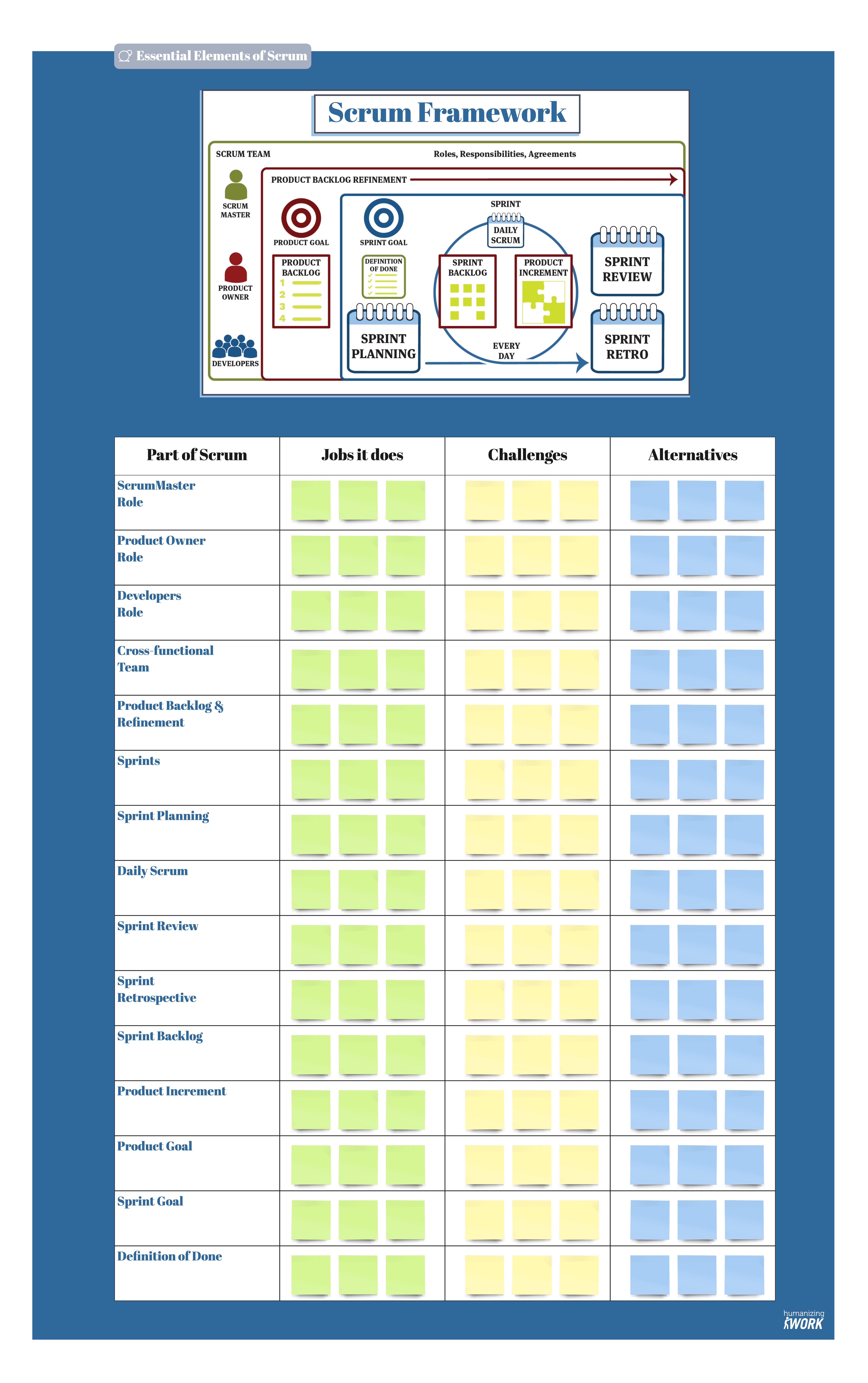What parts of Scrum are essential?
We’ve been on lots of teams where we started with all of the core elements of Scrum, then iteratively dropped or changed some of them to better fit the context of that team. So what parts of Scrum are essential?
 In our January ScrumMaster Community session, we posed this question. We decided to treat the elements of Scrum (the roles, events, artifacts, etc.) like the features of a product, and asked what “customer jobs” that element does for the team and organization. Then, we brainstormed the challenges with using that feature of Scrum, and what alternatives teams and organizations “hired” to get that job done if they weren’t using the Scrum approach.
In our January ScrumMaster Community session, we posed this question. We decided to treat the elements of Scrum (the roles, events, artifacts, etc.) like the features of a product, and asked what “customer jobs” that element does for the team and organization. Then, we brainstormed the challenges with using that feature of Scrum, and what alternatives teams and organizations “hired” to get that job done if they weren’t using the Scrum approach.
What We Discovered
- Some elements of Scrum do have good alternatives for certain contexts. For example, it can make sense to use work-in-progress (WIP) limits instead of sprints, especially for emergent work like support. Other elements of Scrum, such as the cross-functional team, really are the best way to address complex product development. And many elements of Scrum, such as the events, benefit from a team realigning on their true purpose.
- If Scrum is adopted more as a project management tool to ensure we are delivering on our plan, many of the elements don’t make sense. Instead, if we are treating Scrum as a framework to help cross-functional teams manage complex work, most (if not all) of the elements of Scrum have important jobs to do. For example, having a single prioritized list that is regularly refined (the Product Backlog) seems essential. However, there are some core elements that have good alternatives. As an example, the jobs done by Product Goals and Sprint Goals might be done really effectively using other techniques and artifacts and the team would be just fine.
Your Turn
Take some time with your team to talk through the elements of Scrum and what you’re hiring them to do. See if they’re still serving the purpose and if there are good alternatives that still get those jobs done. Essential Elements of Scrum Miro board we created to work through this and feel free to make a copy for your team to use.
Learn More
We’ve been talking about Scrum in a special series on the Humanizing Work Show. Click here to view the full series.
Join the Conversation
The key ideas shared here came from one of our Community of Practice sessions, and we invite you join us. We currently host 3 Communities of Practice: one for ScrumMasters, one for Product Owners, and one for Leaders. Click the button below for details on how to sign up.
Last updated